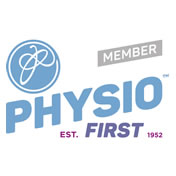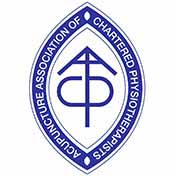Cerebral Palsy refers to a collection of disorders that affect a person’s movement, caused by an injury to the developing brain, usually prior to birth. Although the injury to the brain is static (i.e. not progressive), it produces permanent physical disabilities that will change continuously as a child grows. It is normally detected within the first 12 to 18 months of a child’s life, usually when they fail to reach their normal developmental milestones or begin to display ‘floppy’ muscle tone, tightness of limbs or abnormal postures.
Types of Cerebral Palsy
Cerebral Palsy is characterised by specific abnormal movement patterns, of which there are four main types:
- Spastic - This is characterised by stiff, jerky movements and tight muscles and is the most common type of Cerebral Palsy. It may affect just one side of the body (hemiplegic), may affect both legs but less so both arms (diplegic), or it may affect both legs and arms equally (quadriplegic).
- Ataxic - An individual with this type of Cerebral Palsy may have difficulty with depth perception, balance and fine motor control. Their muscle tone is often quite low and movement poorly controlled causing problems with activities such as walking and writing.
- Athetoid / Dyskinesic - This type of cerebral palsy presents with uncontrolled, uncoordinated limb movement and sudden muscle spasms. It is also characterised by writhing-type movements of the arms and legs which make it difficult for an individual to hold objects or remain still for any length of time.
- A mixture of any of the above types of Cerebral Palsy
Each presentation of Cerebral Palsy is unique to the individual and although the disorder itself is not progressive, the persistent effect of spastic, tight or low-toned muscles can affect the general condition of the joints over time leading to the onset of secondary musculoskeletal problems.
In more severe cases, persistently tight muscles may lead to the development of joint contractures, which result in a flexed (crouched) posture, often requiring surgical intervention to ‘release’ the problematic tendon contractures. This is typically performed on the hamstring and Achilles tendons which can be prone to extreme shortening causing knee and ankle joint contractures, and ultimately difficulty with standing and walking.
Botulinum Toxin A (Botox) injections
In other cases, Botulinum Toxin A (Botox) injections are used to effectively manage spasticity or muscles with fluctuating tone. Spasticity in the muscles surrounding the ankle makes it difficult for an individual to place their foot flat on the floor. Tightness in the hamstring muscles at the back of the thigh leads to difficulty in straightening the leg fully, resulting in a flexed / crouched standing and walking posture. Similarly, an increase in muscle tone in the adductors (inner thigh muscles) makes it difficult for an individual to keep their legs apart. Such altered muscle activity can cause significant difficulties when moving from sitting to standing, when walking, and with a person’s overall balance. Botox injections into these muscles can improve the functional capability of an individual, the ease at which they move around, and decrease the potential risk of them falling.
Selective Dorsal Rhizotomy (SDR)
Selective Dorsal Rhizotomy (SDR) is radical surgical procedure that involves the precise severing of the specific nerve fibres within the spinal cord, that are responsible for producing the spasticity in the lower limbs. As spasticity is responsible for producing painful, contracted lower limbs, the aim of SDR is to selectively inhibit the firing-up of the muscles in the lower extremities in order to allow a child’s legs to relax and promote more comfortable, normal movement.
Not all children with cerebral palsy are suitable for this procedure. Generally, children between the ages of 4 and 11, with a diagnosis of spastic diplegia and suitable strength in their legs and trunk muscles are considered appropriate for SDR, though some children above the age of 11 may be considered. Children with severe Cerebral Palsy involving the whole body or those who present with a severe scoliosis (curvature of the spine), extreme muscle rigidity or dystonia are generally not considered suitable candidates for SDR.
Intensive post-operative physiotherapy following SDR is crucial in order to maximise the benefits of the surgery. The child and their parents / carers must be therefore fully compliant and motivated to carry out their post-operative rehabilitation if the best physical results are to be achieved.
Physiotherapy following SDR focuses on maintaining good trunk and pelvic muscle control, full range of movement of the lower limbs, and a rehabilitation programme is designed to work towards achieving independent, normal lower limb movement, good balance and function, and gait re-education.
Physiotherapy for Cerebral Palsy
Physiotherapy for children diagnosed with Cerebral Palsy should begin from the outset following diagnosis. Although there is no cure for this condition, physiotherapy management is vital in order to help to maximise an individual’s strength and movement control, walking and general functional activity, and in the prevention of tendon contractures and other musculoskeletal complications.
Our Specialist Paediatric Physiotherapy Team sees children with all types of Cerebral Palsy including those following Botox injection and surgical tendon release, and is one of the very few physiotherapy teams in the region who has experience in dealing with children who have undergone Selective Dorsal Rhizotomy. We can arrange a physiotherapy assessment and treatment session from within one of our clinics, or if it is more convenient, from within a child’s home or school.
Get in touch if you would like to know more about our Specialist Paediatric service and how we may help your child.





